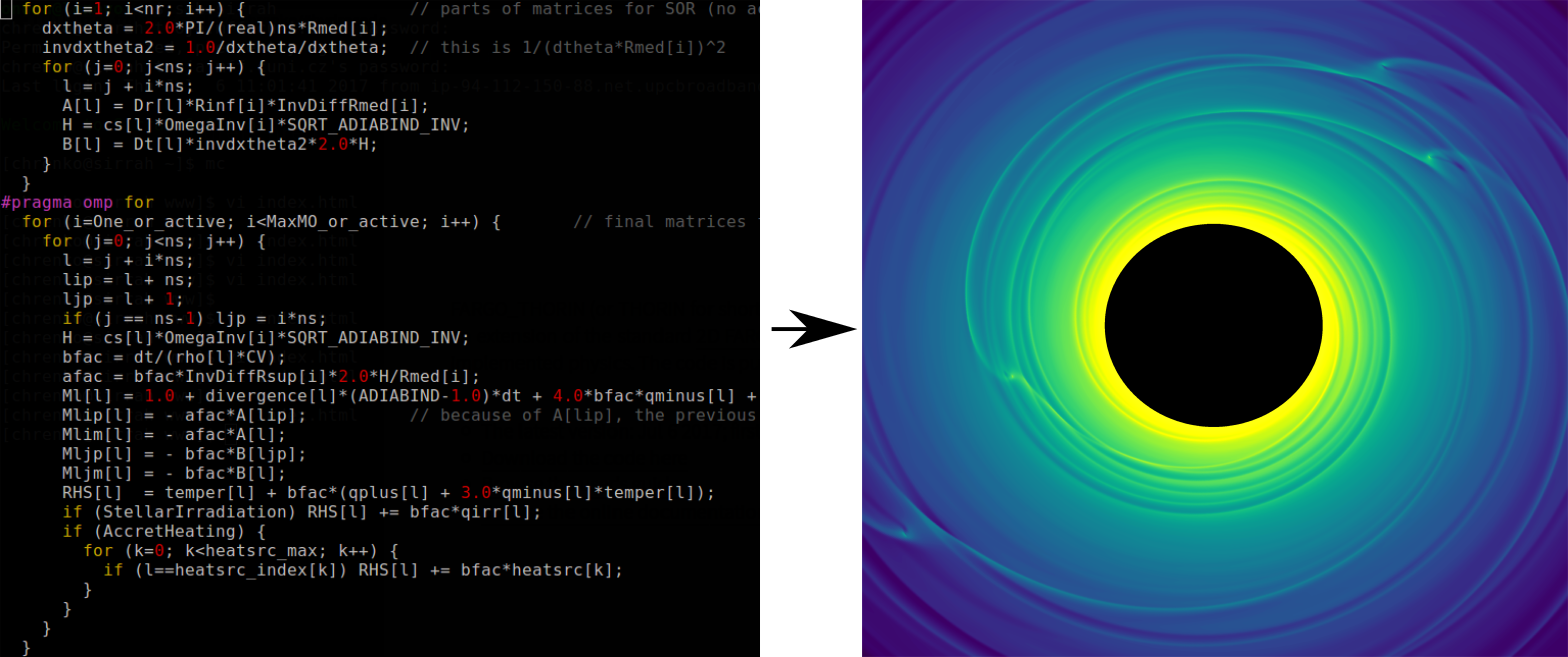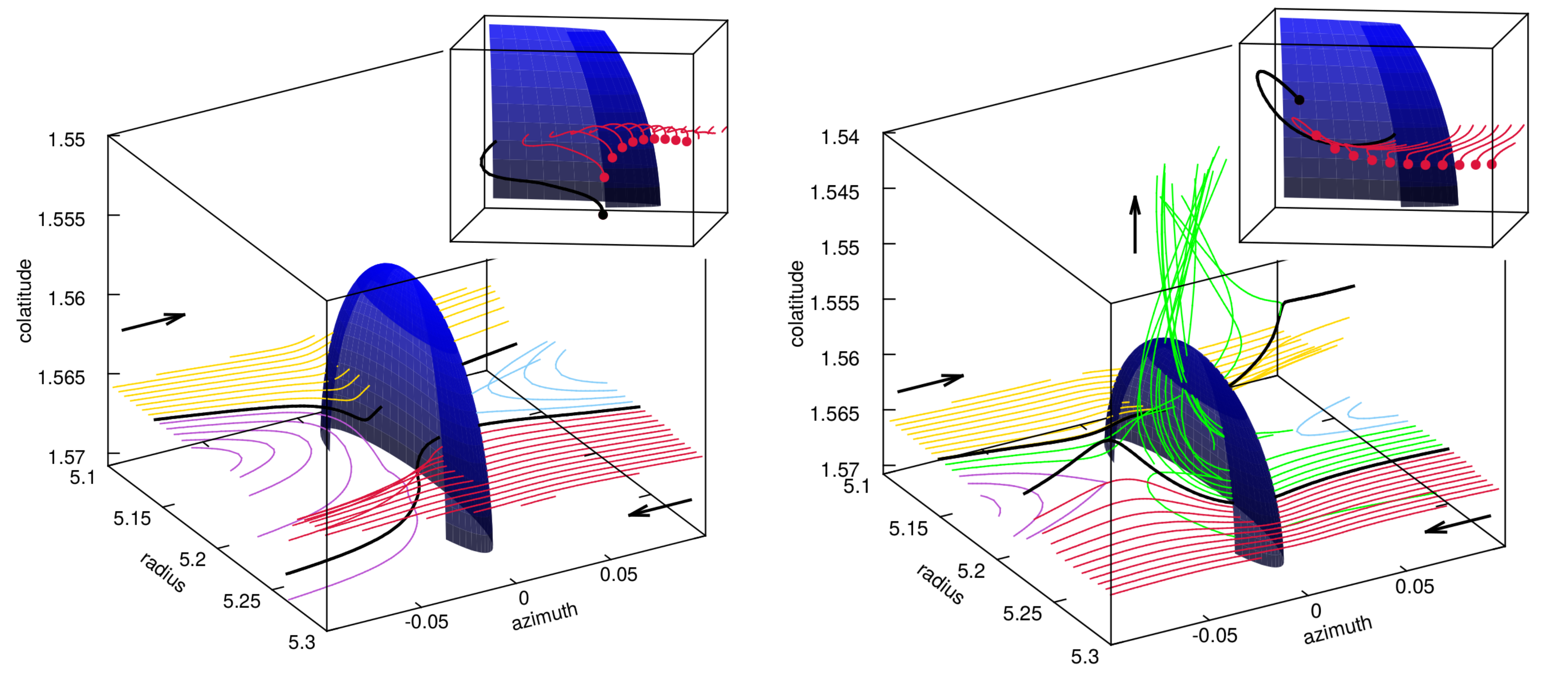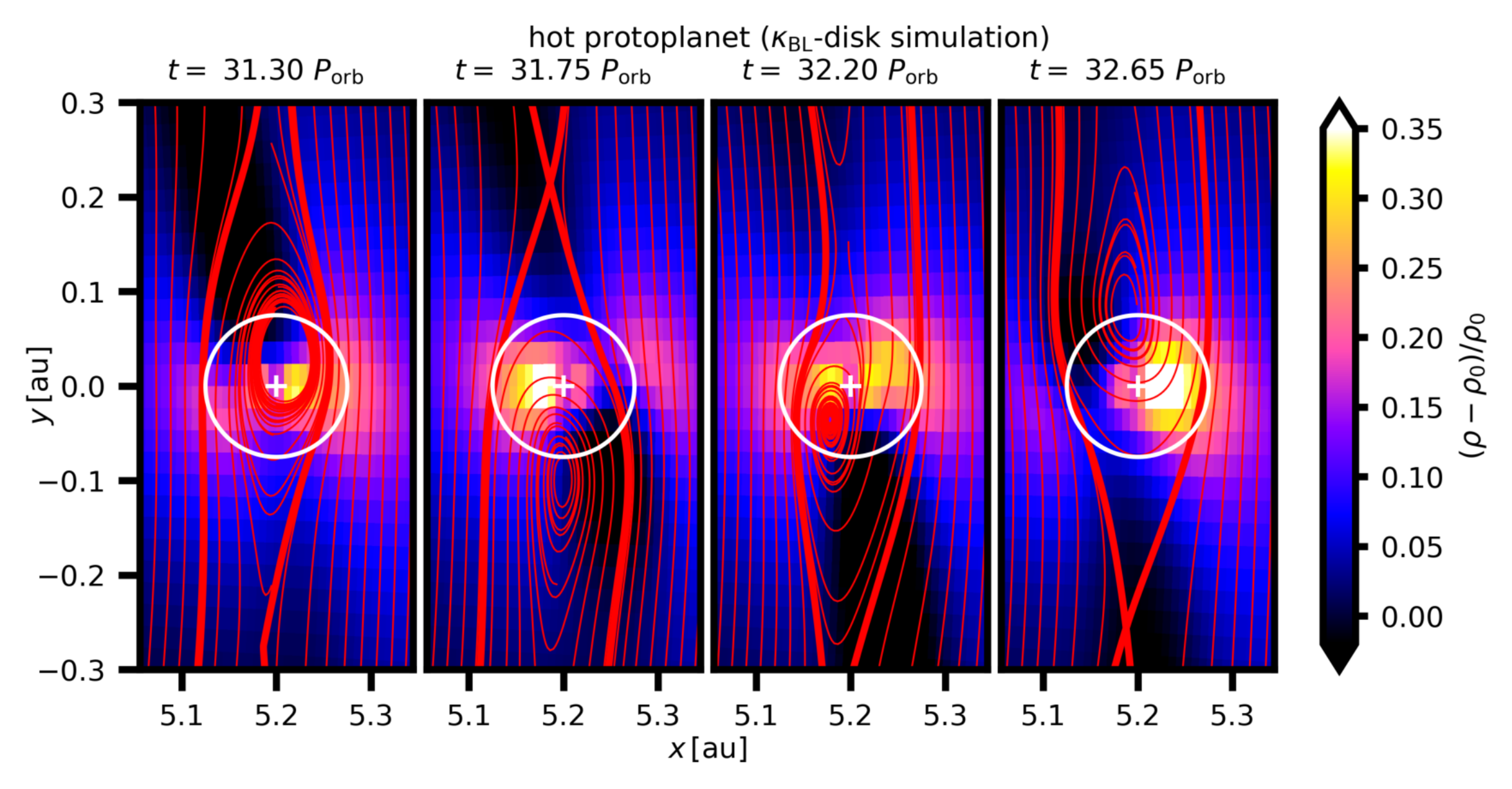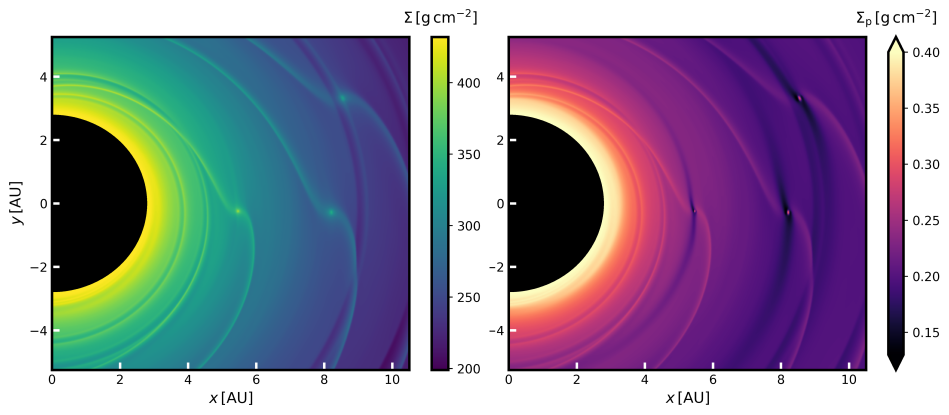3D gas flow around cold and hot protoplanets
In Chrenko & Lambrechts (2019), we investigated migration of low-mass protoplanets in radiative disks. Our aim was to check how the heating torque (Benítez-Llambay et al. 2015) differs between disks with constant and non-uniform opacities. In the process, we realised that the 3D gas flow around accreting luminous ('hot') protoplanets is significantly different compared to non-luminous ('cold') protoplanets. As shown in the figure on the left, the topology of the horseshoe region profoundly changes and a vertical outflow is established when the protoplanet has a substantial luminosity. The depicted simulation was performed with a constant value of the disk opacity. The distortion of the flow arises because of baroclinic and convective perturbations.
Simulations in Chrenko & Lambrechts (2019) were conducted with Fargo3D (Benítez-Llambay & Masset 2016) into which we implemented the energy equations for gas and radiation.




